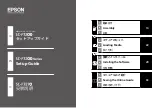
24
3D SYSTEMS, INC
.
6
GLOSSARY
Advisory
- In the SLS system software, any warning that can eventually turn into an alarm, based on the amount of time that
the warning is active.
Air Handler
- The component of the MQC that removes airborne powder during sifting and rough breakout procedures. See
MQC User Guide for more information.
Alarm
- An abnormal operating condition that shuts down your current operation, motion, heating, and lasing in the SLS
system
Application - Sinter Software
- The software that runs the SLS system. Currently runs on Windows 10.
Beam Delivery System
- see also Image Processing Module (IPM) - All the optical components of the SLS system, including the
laser, mirrors, lenses, and galvanometers
Beam Width (Laser Spot Size)
- Smallest diameter of the focused laser beam; it is located at the image plane in the part bed.
Bounding Box
- An imaginary box that defines the three-dimensional space in which the part fits. Bounding boxes are used in
the Build Setup application.
Build
- One or more parts set up to be sintered in the same part cylinder.
Build Mode
- A state of operation of the SLS system software in which options to start and stop a build process are available.
See also Main Mode, Manual Operations mode.
Build Packet File (BPF)
- The file that contains the collection of parameters that define a build. You must prepare a build packet
file before you can run a build.
Build Profile
- The control parameters for an entire build and how they will vary during the build. These do not vary from part to
part during a build. See also Part Profile.
Build Stage
- Defines the build profile for the layers during the build stage, as opposed to the warm-up and cool-down stages.
See also Cool-Down stage and Warm-Up stage.
Build Viewer
- During a build, a graphical representation of the build, viewed from above, that simulates on the computer
screen each slice as it is scanned. While you are running a build, you can use the Build Viewer to monitor how the build is
executing. The Build Viewer is located next to the
Build Status
dialog box.
CO
2
Laser
- The power source for the selective laser sintering process. The beam is invisible and can cause serious burns.
Cool-down Stage
- The build profile for the layers that come after a build when there is not a follow-on build. See also Build
Stage and Warm-Up Stage.
Default
- A response or set of conditions used by a computer unless the user gives it specific instructions to use something else.
Dependency
- In the SLS system, a condition that must be met before a command can be executed.
Dialog Box
- A subordinate window that opens within the SLS system software. It either presents information to you or asks you
to give information to the software.
Duty Cycle
- In a timed function, the percent of time that the function is on.
Facets
- In the STL model of a part, the triangular surface areas that represent the exterior and interior surfaces.
Fill
- Parallel vectors that make up the horizontal surface of a slice in a part build
Fine Breakout
- The final finishing process for a sintered part after breakout. Fine breakout can include sanding, applying a
lacquer, and so forth. See also Rough Breakout Station.
Gas
- The nitrogen/oxygen mix supplied to the SLS system process chamber during the build process. See also Gauge Panel,
Inerting, Supply Gas, and Return Gas.
Gauge Panel
- Controls the atmosphere, inerting, process chamber. See also Inerting, Supply Gas, and Return Gas.
Heater Assembly
- SLS 380 Process Chamber Configuration
•
Eight heaters controlled by Eight zones - Four lower, outside heaters in a fixed position and four upper, inner heaters
on trays that fold up against the process-chamber walls:
◊
Outer and Inner Right Back (Quadrant 1)
◊
Outer and Inner Left Back (Quadrant 2)
◊
Outer and Inner Left Front (Quadrant 3)
◊
Outer and Inner Right Front (Quadrant 4)
•
The IR sensor measures the temperature of the part bed and a single Master Duty Cycle is calculated. Each of the
eight heater zones uses a ratio of the Master Duty Cycle. Early in the warm-up stage, during the initial ramp up of
temperatures, these ratios are controlled by the process values in the build profile. After 7 mm, the IR camera is used
to control the ratios.




































